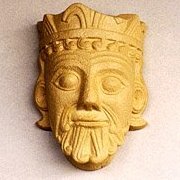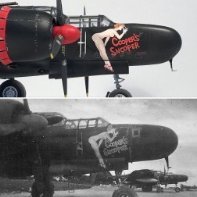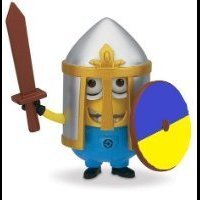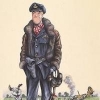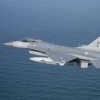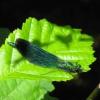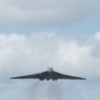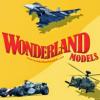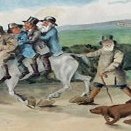Search the Community
Showing results for tags 'biplane'.
-
de Havilland Tiger Moth (A04104A) 1:48 Airfix The de Havilland Tiger Moth was one of the most important and widely produced trainer aircraft to have seen service with the RAF. It was designed by Geoffrey de Havilland himself in the 1930s and was based on the Gypsy Moth, suitably redesigned to meet Air Ministry Specification 13/31. In comparison to its predecessor, the Tiger Moth's wings were swept and repositioned, and the cockpits were redesigned to make escape easier. The airframe was also strengthened and the engine exhaust system was redesigned. The Tiger Moth entered service with the RAF in 1932 and remained in use until well after the war. Over 8,000 examples were completed, and the type also served with the Royal Australian Air Force, the Royal Canadian Air Force and the Royal New Zealand Air Force as well as a great many other military and civilian operators. In service it proved itself to be ideally suited to its role, being easy enough to fly, but challenging enough to weed out the weaker students. It was also cheap and easy to maintain. Further variants would be the DH.82C fitted with an enclosed hood for cold weather operations in Canada, and the Queen Bee, which was an unmanned radio-controlled target drone that resulted in a thinning of the herd of surviving airframes. Always popular with civilian users, many Tiger Moths found their way into private ownership after the War, with many maintained in flying condition to this day. The Kit This is a reboxing with new decals of the 2019 tooling that made many quarter-scale modellers very happy. We didn’t get chance to review the original release, so it’s good to finally see one in the photo booth. The kit arrives in a suitably sized red-themed top-opening box with some dramatic artwork on the top, depicting the last landing of a biplane on a British Carrier in 1964, which involved HMS Eagle and an airframe from Britannia Royal Naval College in Plymouth wearing a silver dope and dayglo striped scheme, as shown here. Inside the box are three sprues of dark grey styrene, a small clear sprue, decal sheet and the instruction booklet that is printed in colour on matt paper, with painting and decaling profiles on the rear pages, plus a comprehensive rigging guide that extends to two pages of the booklet. Detail is as we’ve come to expect from Airfix, including restrained scalloping of the fabric surfaces, detailed cockpit and even an engine details inside the nose with the option to open one side of the cowling, and the afore mentioned rigging diagram should go a long way to calm any modellers that are rigging-phobic. Construction begins with the cockpit floor, fitting the rear seat and bulkhead, then making up the front seat and its bulkhead, which is a strange shape due to the seat being half-buried in the bulkhead, giving both crew a control column before it is inserted into the port fuselage after doing some detail painting, ensuring that a tab on the front of the floor fully latches in a slot moulded into the firewall in the fuselage halves. A set of rods are inserted into the half engine moulded into the port fuselage, with a scrap diagram showing it from the front, then the two instrument panels with their dial decals are painted and installed in front of each crew member, again after detail painting. The starboard fuselage side has a pair of crew doors moulded into it, but with the perimeters thinned to ease cutting them out if you wish to open them, although you don’t need to retain the cut-out doors, as extra parts are included on the sprues. Engine detail is glued to the flat side of the engine moulded into the fuselage half, and if you plan to use an Airfix stand, there are two flashed-over holes under the cockpit that you can cut out, painting the sidewall detail before you close the fuselage halves and deal with the seams. A curved fairing is fitted to a depression in the port side of the fuselage behind the engine, and on the starboard side the exhaust is attached to the engine, then after drilling a 0.4mm hole in the firewall, the A-frame engine mount is fitted over the engine details after painting and weathering them according to your taste. A top cowling panel is mounted over the top of the motor, fixing the front cowling with intake port and prop fairing, fitting the lower and port engine cowlings in the closed position, then deciding whether to open the starboard cowling to expose the engine detail, or closing it using the same part, a scrap diagram showing its opening angle. A jig is found on sprue C, and is mounted over the tail without glue, which allows you to remove a shallow section of the fuselage top to accommodate the strakes added to the elevators of decal option A. The instructions show it from two angles to assist you, and a file icon suggests what to use to remove this area. After you are happy with the job you’ve done removing the plastic, the elevators with strakes are glued in place for option A, and a different part without strakes is used for option B. Both tail styles are supported by diagonal struts that pin at both ends, plugging the rudder into the rear of the fuselage and adding a tail skid with the aid of a scrap diagram nearby that shows the assembly from another angle. The lower wings are moulded as a single part that is linked by a narrow section that slots into a groove in the fuselage underside. Once the glue is cured, cabane struts are mounted vertically on the curved fuselage sides, preparing the upper wing by adding a ribbed fuel tank on the centre section, then flipping it over to slot the interplane struts into grooves moulded into the wing surfaces. You might wish to align the upper wing with the model while the glue cures, and once everything is set, the two wings can be glued together, ignoring the rigging aspect of this model for the time-being. A scrap diagram shows how the cabane struts fit into grooves in the underside of the upper wing, either side of the fuel tank. The instructions suggest you apply the underwing codes before fitting the aileron actuators that are mounted under the wings, although the decals stop short of interfering with these parts on the diagram, then a handle-shaped part is fixed on the fuselage underside between the wings. The landing gear is created from a bridged W-shaped main strut, which is braced by a pair of diagonal forward struts, one on each side, adding another smaller pair behind the legs while slotting the single-part wheels onto the axles. Turning the model over onto its wheels for the first time, a vent is added to the fuel tank, and a choice of two prop styles are pinned to the front of the model by a separate part, which can be left mobile if you are careful with the glue. Returning to the cockpit, padded coamings are fitted to the front of the cockpit openings, adding faceted windscreens to slots in the top of the fuselage, then if you have cut out the crew doors, two new door parts are installed in the open position, leaving ‘just’ the rigging left to do. Most biplane modellers have their own preferred method for rigging their models, and here Airfix have provided two pages of diagrams to assist with the process, which would be most useful for anyone not familiar with the task. The Tiger Moth isn’t overly complex in its rigging either, so if anyone was thinking of joining the biplane community, this could be a good kit to start your journey with. Markings There are two decal options included on the sheet, with suitably different markings and schemes to broaden its appeal. From the box you can build one of the following: BB852/E, Britannia Flight, Britannia Royal Naval College, Roborough, Plymouth, Devon, 1st July 1965, the last biplane to land on a British carrier (HMS Eagle) No.9 Elementary and Reserve Flying Training School, RAF Ansty, Warwickshire, England, October 1940 Please note that the Dayglo Orange decals above appeared light pink after scanning, so the colour has been approximated by eye and reference to a photo taken on an iPhone in PhotoShop Decals are by Cartograf, which is a guarantee of good registration, sharpness and colour density, with a thin matt carrier film on the dayglo orange decals, and gloss carrier film everywhere else, cut close to the printed areas. Conclusion A welcome re-release for those that didn’t manage to pick the kit up first time around, or just wanted another kit, while the new decals add extra interest, especially the last biplane to land on a British carrier, which will be a bright model thanks to the dayglo stripes, which aren’t pink on the sheet, I promise. Highly recommended. Review sample courtesy of
-
Hi everybody, After recently completing my first ever scratch build I am jumping back into the deep end. The BE2c has long been a favourite of mine but has never been available as a 1/32 kit so the only option is to get stuck in and have a go at scratch building one. The version I want to model has a Royal Aircraft Factory 1a engine which is not available as an after market kit so that is where I shall start. The engine looks quite complicated so let's just see how far this goes, if nothing else the modelling Gods might take pity and give us a kit. Here is a picture from the front; Royal Aircraft Factory 1a V8 engine by Richard Williams, on Flickr Scary stuff! The crank case at least is just a box and the massive fly wheel is just a circle at the back. A few bits and bobs stuck together gives me this; RAF 1A V8 engine by Richard Williams, on Flickr The mounting beams are left long for ease of handling and will be cut down once the frame is together. RAF 1A V8 engine by Richard Williams, on Flickr Not he most impressive work for sure but it's a start! I don't know the name for the tear drop shaped housing that the prop shaft goes into, whatever it is called I made with laminated 2mm styrene sheet cut and filed into shape. Handily this gave me a centre line for adding the bolt fixing channels. The bolts (correct number of!) were added by using a similar method to my riveting method. 2mm lengths of 0.5mm brass tube were cut and using a paintbrush were applied with Future floor wax. Nice and easy because it can be rolled into position. 20210811_224652 by Richard Williams, on Flickr Once dried super thin super glue is applied to each one and zapped with Zip Kicker. Hopefully this gives the look of them being part of the casting rather than separate parts stuck on. A quick lick of paint to see how it looks reveals a few blobs of CA glue that need to go but I quite like the overall look. 20210811_231525 by Richard Williams, on Flickr Cooling fins were added to by cutting tiny pieces of styrene. Gel super glue was added to the engine part and using tweezers the fins were added. Great care needed to be taken to hole the fins so the tweezers didn't touch the glue, not 100% successful but at least nothing pinged across the room. 20210812_193956 by Richard Williams, on Flickr Again, super thin super glue was run down each fin in the hope of making them look like part of a 1 piece casting. The main parts are just tacked together with a tiny blob of glue for ease of handling but it is beginning to look like an engine! I won't have any time for a few days so here it will stay for now. Thanks for watching, all comments, criticisms and advice gratefully received. Have a great weekend. Richie
- 481 replies
-
- 20
-

-
The Vickers Valentia is the tenth 1/72 aircraft kit I've made since I restarted modelling in 2020. But it's the first vacform, and nothing really prepares you for that. Fortunately, JWM was already working on one and his Valentia K3160 WIP pages (https://www.britmodeller.com/forums/index.php?/topic/235109961-vickers-valentia-contrail-172/) provide a masterclass in tackling the idiosyncrasies of these Contrail kits from the 1980s. There are parts that don't fit well, scored lines that are almost invisible, parts so thin the plastic can even melt if the putty is exothermic, and ludicrously inadequate instructions. The kit needed a fair amount of scratch-building to prepare items that weren't in the box or to replace parts that were plain wrong for this aircraft. I was lucky to find an unopened box so I could see from the beginning where I'd need to improvise. So no complaints, some things you just have to learn. It can be difficult to find information on aircraft from the interwar period. Around eighty of these 'Type 264' Valentias were built, and none of them survive. However, I had a personal lead-in, as it were, as my dad had flown in one on the Khartoum-Nairobi route AND HE TOOK PHOTOGRAPHS. Working through his negatives from 1938 to 1941 was the starting point of all my recent builds. So here she is - K3604, code 'B', of 216 Squadron RAF, at Malakal in Sudan (now South Sudan), on Sunday the 8th of January, 1939, where they had a flat tyre on the rear wheel. p7_57_doublex by Sandeha Lynch, on Flickr Aircraft fabric paint on a black and white photo shows up as white under an equatorial sun. I was almost tempted to paint the body all white, but instead I picked a metallic paint and reduced the shine with around 20% satin white. IMGP0455x by Sandeha Lynch, on Flickr The ribs on the rear of the fuselage and on the wings below the engines are 0.5mm hemp cord, the same as used for model ship rigging. And following Jerzy's lead, I bought 1.5x2.5mm ABS strips for the main wing struts and used another 2mm rod for the exhausts. For the tail struts with a wider profile I took a couple of rods, glued them together, and filled the groove with putty. IMGP0448x by Sandeha Lynch, on Flickr The kit has Pegasus II engines as required, but there were no exhaust collector rings in the box. Instead, 1mm ABS rod was cut up and glued against a plastic ring cut from the body of an old Letraset ProMarker pen; the diameter and thickness were very close, and filing, putty, and paint did the rest. Antique Copper paint, some Plaid FolkArt acrylics I had - 20 years old but still good. I also had some 3mm brass tubing from another project I did 20 years ago which was a perfect sleeve for a 2mm prop shaft - I now have the smoothest running propellers ever. IMGP0481x by Sandeha Lynch, on Flickr Jerzy was also on point in removing the individual window sections and inserting one long strip of clear plastic with painted divisions - so much easier, though it was still tricky to keep the glass clean. The cockpit seats are small squares of ABS sheet in a stack, with an upright piece forming the back. I used grey and Cockpit Green on the interior. Seat belts and instrument panel are from a Kora Fairey Gordon kit I'd bought from LFModels two years before. Well, it's from the same period! IMGP0475x by Sandeha Lynch, on Flickr One of the undercarriage struts broke at the elbow when I was trimming off the flashing. It was such a weak point I reinforced them all by gluing the flat side to 1mm ABS sheet and then trimming them to a better shape. You don't want them to look too heavy of course, but the finished aircraft is no lightweight at 150g. Fortunately, the black injection plastic wheels were pretty good and just needed filing around the edge. The tail wheel may also have come from the Gordon kit, as my own version had used a skid. IMGP0467x by Sandeha Lynch, on Flickr I haven't added rigging to any of the biplanes I've built and without practice there can be no skill, so I wasn't about to try it with this model. Maybe next time. The original Contrail decals needed cleaning up as the glassine paper had stuck to them but they were tough enough to withstand a wet cotton bud. And a creative drop of paint was needed in converting the supplied K2340 decals to K3604 under the wings, the 2 taking on the role of a 6. Juggling the small code numbers around the tail was very tricky. The 'B' on the fuselage is in two sizes; an old ModelDecal '105' sheet was good for the nose and a Kits-World paint mask on a clear decal sheet did the rear. IMGP0474x by Sandeha Lynch, on Flickr Faults? Yes, quite a few in planning and assembly. There is a slight distortion at the tips of the wings. I used 1mm ABS sheet strips to reinforce the length inside but should have added more around the extreme edges - in some places the vacform wing plastic is probably no more than 0.3mm thick. Getting the fuselage cuts right for the angle of the lower wing to slot into was also difficult and needed Milliput packed in below. For contrast, this shot shows a Fiat CR.42 Falco I made a couple of years ago. Both 1/72. Who knows, they may have met in the skies above Sudan and Eritrea. IMGP0464x by Sandeha Lynch, on Flickr I started cutting out the parts in November '22 and worked on it in shifts. Challenging? Very. Satisfying? Immensely. IMGP0452x by Sandeha Lynch, on Flickr
-
A couple years ago my lovely wife bought me a model biplane for Christmas because she wanted me to build one for her. The kit in question was the Revell 1/48 PT-17 Stearman and after pondering a few different yellow-based schemes we found this image and the choice was made. Some weeks later, in the late [Australian] summer of 2020 I was finished and she was very pleased with her biplane. I was too, it was not only my first biplane but my first attempt at rigging. I used stretched sprue individually attached and each individually snapped tight with smoke; an exercise fraught with potential disaster at every step. Nonetheless, it turned out quite nicely and looked quite striking in its Recall Colours. The Stearman was duly placed in the display cabinet and more or less forgotten. Until... Fast forward to just over a year ago and we are packing up to move from Sydney to our new home in Canberra. Packing is never fun, especially in a pandemic with Sydney in a hard lock down - oh, those days seem long ago now, don't they? - and I was looking for ways to reduce the burden. I really didn't want to pack many of my built models so I advertised and several were sold. Can you can guess where this is going? Let's say for the sake of brevity that Mrs.Mark.au was disappointed in my decision to sell "my biplane" and has on [somewhat frequent] occasion reminded me of that egregious error on my part. Any how, after completing my Academy Mk.XIVe the other day I pondered on what to take on next. I narrowed it down to three options; 1. A No. 411 Squadron RCAF Spitfire LF Mk.IX as a study in weathering; 2. A Burma based RAF Thunderbolt; 3. or Robert Hampton "Hammy" Gray, VC, DSC, RCNVR's Corsair. The first and last of these choices provide the opportunity to join the Canadian GB currently running until October which would subsequently lead very nicely into the P-38 GB which I am already committed to with an RAAF marking on worn Haze colouring, an interesting paint challenge in itself. I happened to mention these choices to Mrs.Mark.au and she asked to see them; upon review of the choices shown above she casually mentioned that none of them appeared to be a biplane. I then made a critical mistake, I asked her to take a look at the stash and suggest my next project. With laser-like precision she focused on this which at the time it was in the pile, quite high up, and quite inconspicuous, I thought. "I want the red one" she said, and that was that, there was no honourable way out, so a biplane it is. A rigged biplane. A 1/32 scale biplane, so how bad can it be? This evening I began work. I decided right away this was going to be a superficial effort; by that I mean I will complete it out of the box with the minimum effort in the cockpit or any other unseen components - no effort at all, actually - and instead focus on a really good paint job, weather it appropriately and learn how to rig like the pros. With that sophisticated plan in place, I set to. The mouldings seem reasonably ok, a little bit of flash and some minor clean up to do but nothing terrible. The plastic seems soft and the detail matches it, it's similar to feel and detail to ICM's 1/48 Spitfire, but I've seen worse. I began to remove some of the larger parts from the sprues and cleaned them up. After studying the instructions I decided that I could push the assembly quite some way before having to paint anything so I began splashing Tamiya Extra Thin abut the place. Soon I had this; Looks pretty rough, huh? Almost none of it can be seen once the engine is installed so it doesn't matter what most of it looks like. Next, I joined the fuselage; On the face of it, a ballsy move but bear in mind the plastic was is so soft that all the internals can still be added with the rear of the fuselage joined. I did it this way as there are no locating pins on the fuselage and I wanted to join it free from concern about aligning any of the internals at the same time. This way, I focused on a clean fuselage join first, got that set and clean before slipping in the internals. N Next, I added the seat and engine, glued on one side only so that I had room to manoeuvre when adding the fuselage upper piece (which is of fixed width and I want to be able to match the fuselage halves to meet it cleanly) and the engine radiator at the front (which is also of fixed width). Next I added the rest of the cockpit and dry fitted the fuselage topside. A dry fit of the radiator and one of the engine covers shows that I got a pretty good alignment and fit on the fuselage assembly. I've also checked the lower wing fit and that will work well too. My goal is to be able to paint the fuselage separately from the wings - it seems this will reduce the masking requirement as the wings aren't red, only the fuselage is. It'll look better when done too. This is all setting up now so next session I'll paint the cockpit interior with some vaguely wood-looking shades and I still have sufficient access to the instrument panel to make it look something like an, err, instrument panel. The engine won't be painted until after the fuselage because it'll be a lot easier to mask around the engine than to mask the engine. Or maybe not, I'll check that assumption later. As mentioned, I'm doing "the red one" belonging to Captain Duncan William Grinnell-Milne. From Wikipedia; Capt. Grinnell-Milne was an English First World War pilot credited with six confirmed aerial victories, a prisoner of war who escaped from German captivity, a flying ace, and an author. Initially serving with the 7th Battalion, Royal Fusiliers, he was seconded to the Royal Flying Corps before joining the Royal Air Force. His was quite an interesting story - he named his aircraft "Schweinehund" because that was what his captors repeatedly called him while he was in their care. As a complete beginner of this kind of modelling I'm open to all advice, suggestion, critique, and even ridicule as long as it's funny 😉 Cheers.
- 93 replies
-
- 24
-

-
- Roden 1/32
- SE5a
-
(and 1 more)
Tagged with:
-
G'day all; Here's my just finished SE.5a from the Roden 1/32 kit. In brief, this is my first WW1 rigged biplane and I enjoyed it very much. The kit built up well with no significant fit issues. There are no decals on the model, I painted all with masks made on my Silhouette cutter. I marked mine as "Schweinhund III" rather than the conventional "Schweinhund" because in his book Duncan G-M says he had three aircraft of that name and I wanted to model his last one. I have no photographic evidence for this, but it's a bit different and I like that. Here's the WIP if you're interested in the how's and why's of the build. The finished photos: Cheers.
- 23 replies
-
- 52
-

-

-
- Roden 1/32
- SE.5a
-
(and 1 more)
Tagged with:
-
A suggestion. Well in advance as this ere forum works that way and it takes time to get the required numbers A 'Fokker' GB in 2022 I noticed that Antony Fokker started his first company on 22nd February 1912 So 2022 will 110 years of Fokker There are plenty of models, from the E.I / II / III / IV series, the ubiquitous Dr.1, D. VII and the D.XXI to the F.27 100 and more, and all sorts of numbers and types in between. Excluded are the types that Fokker bought in and sold on as a sales agent Anyone for it? 1. Black Knight (me, of course) 2. Corsairfoxfouruncle 3. Marklo 4. Andwil 5. John Masters 6. TonyOD (?) 7. Ted 8. JOCKNEY 9. Tim R-T-C 10. stevehed 11. Arniec 12. Rob S 13. Torbjorn 14. Peter Lloyd 15. RC Boater Bill 16. 2996 Victor 17. zebra 18. ColonelKrypton 19. dnl42 20. Blitz23 21. GREG DESTEC 22. ??
-
Hi there I bought the Kora Fairey Gordon Mk1 from LFModels a couple of months ago and I just wanted to say - it was difficult. IMGP0106a by Sandeha Lynch, on Flickr Somewhere on the box it says it's for experienced modellers and not for children, and at 68 I'm likely halfway between the two. It's an attractive enough biplane, and as a kit it fit together very well, including the unusual mode of selecting two out of the three body halves, chopping the end off one of them and gluing a new half-nose in its place - basically an object lesson in upgrading the older Fairey IIIF to become a Gordon. IMGP0107a by Sandeha Lynch, on Flickr But the wing struts seemed weaker than on the other two biplanes I'd done, so there were accidents, splints, patches, and wedges, and even some additional paint layers to keep the whole thing together. I also misinterpreted the axle position on the landing gear. Rather than moulding a V shape, it had two supports on each side, requiring some guesswork on how to get the axle into the right position and make it rigid. In the end I cut some half loops of plastic to strngthen it. A V shape with a ring would have been easier !! Does anybody else just feel a bit sad when a propeller won't turn? This is the second biplane I've done that doesn't have a turning prop as standard - I mean, it would be possible with some considerable effort and some decent material for a spindle, but frankly I'd call it a disappointment in the design department. But anyway, it was fun to do. And it kept me occupied as intended. IMGP0111a by Sandeha Lynch, on Flickr I mentioned another time that I am working on those aircraft I found among my dad's negatives from while he was in the RAF in Sudan, etc. There's only one shot of a Fairey wing, the tips of the struts being quite distinctive. There would have only been a few of these aircraft remaining in 47 Squadron when he joined them in late 1939, and possibly only those with floats that were kept for work on the Nile, but I know that one of his mates there had enjoyed flying them. 6x6blue_86 by Sandeha Lynch, on Flickr
-
Hi all, Here is my latest build, the 1/48 Bristol Bulldog kit from Lindberg. This kit traces its lineage right back to 1968, which makes the moulds 52 years old…! Extensive modifications were made to the kit, including reworking all of the external surfaces (the kit comes with horrible textured fabric surfaces all over and raised panel lines), scratchbuilding the cockpit (the kit cockpit is non-existent), correcting the underside of the nose, correcting all of the nose panels, adding the chin radiator, adding the under-belly panel and circular under-fuselage fairing, replacing and detailing the engine cylinders, pushrods, sparkplugs and other details, scratchbuilding the windscreen, adding gun sights, bomb racks, navigation lights, and a whole bunch of other changes too numerous to list here. I painted the machine in the (rather boring) markings of a Royal Australian Air Force (RAAF) machine, using Red Roo decals for serial numbers. The national markings were spray painted. RAAF machines did not appear to be fitted with radio equipment. No photographic evidence found to show that RAAF Bulldogs sported antenna wires, nor do any photos show that RAAF machines sport lower starboard wing mounted air-driven generators (though the fittings for said generators remained). RAAF machines could be seen with various combinations of bomb racks, upper wing navigation lights and lower wing flare racks. Any combination can be seen. The combination I chose was bomb racks and upper wing navigation lights. The build took me just under four months all up. It was a fun build, but it fought me most of the way. It’s good to finally have something off the bench for the year… Anyway, here are some pics: Build progress and more detail shots are here - All comments, criticism and feedback welcomed. Cheers, BC
- 63 replies
-
- 80
-

-

-
I recently acquired a copy of the old Hasegawa kit in 1/32nd scale from a collection. It had been started, just gluing wings and wheels and what-not together. I have all of the old 1/32nd between wars kits that they did and I always admired them and wanted to do an ultimate build but never felt I had the skill to do the job I wanted to do. This one was FREE! So I decided, what the hell, let's just do an OOB build. Maybe I'll even get through it. It is a pretty basic but surprisingly well done kit. Everything actually fits! A bit surprising for a mid '70s kit. I DID plan on OOB BUT... I just can't help adding JUST a little bit here and there...
-
This is my rendition of a 1940 Tiger Moth from the RAF Flight Training School. It's the 1/72 Airfix kit plus the Eduard PE set and some additional bits from the Eduard PE "stretchers and control horns" set. The build was started in August 2015 as my entry to the "Tiger Moth STGB". As usual, I didn't manage to finish it in the GB's time frame and could only resume the build this year. This time, it was finished. Some notable points of the build: Extra detail from Eduard's Tiger Moth PE set Extra control horns and stretchers (underside of the tail plane and inter-wing rigging stretchers from the Eduard PE "stretchers and control horns" set) EZ-line for rigging and control cables Control mechanism and cables for the ailerons added (underside of the fuselage, behind the landing gear) Rudder deflected to the left, as usual in TMoths on the ground Alclad Grey Primer Paints from Gunze Aquos Light weathering using dry brushing of lighter tones on wing ribs and Vallejo acrylic brown wash overall Alclad Flat coat The WIP thread is here. Here are the pictures: 1. General views IMAG6375 IMAG6376 IMAG6377 IMAG6378 IMAG6379 IMAG6386 IMAG6380 IMAG6381 IMAG6383 IMAG6382 IMAG6384 IMAG6385 IMAG6387 2. Rigging and control cable details IMAG6389 IMAG6390 IMAG6395 IMAG6396 IMAG6391 IMAG6392 IMAG6398 3. Cockpit details IMAG6393 IMAG6394 4. Aileron control mechanism and actuators IMAG6397 IMAG6401 5. Landing gear details IMAG6399 IMAG6400 6. Family picture Here we can see a Spitfire Mk. I, the Tiger Moth and a Defiant, all from 1940. IMAG6402 Thank you for looking. All feedback is very welcome. Cheers Jaime
-
This was my entry to the Tiger Moth GB back in the summer of 2015. I didn't manage to finish it in the time frame of the GB and it has been untouched since. I'll try to finish it now. Thanks for looking. ----------------------------------------------------------------- Hello, As if I didn't have enough ongoing builds, I decided to participate in this GB. I will be building Airfix's 1/72 Tiger Moth in RAF Flight Training School colours, 1940. Here are the kit, sprues and decals: IMAG2533 Here's the camouflage scheme: IMAG2535 The kit is nicely detailed out of the box but I will add Eduard's PE fret to the build. I have this on order with my LHS and it should arrive in mid-August. Until then I won't be doing much on the kit, if at all. The aircraft will be rigged, of course. It will be done with elastic fishing line glued with CA. That's all for now. Thanks for looking. Jaime
-
Dear Colleagues Here is my newly completed Roden 1/72 Gotha G.III. Probably the toughest modelling challenge I have completed in the last 20 years! The kit has many refinements but it is not engineered in a way to give it any strength. Each lower wing is made of three parts, with the engine nacelle being one of the parts. Roden offer you tiny nibs to make the join. But I felt safer drilling out and using brass rod. One of the rare examples in which the rigging is critical in holding it together in fact! It has the photo etch set from PART. Given the limited engine power of the time you can see why the designers went for a gigantic wing span. Apparently the most dangerous part of any mission was landing the beast! Note there is no windshield for the pilot and his throttle controls were outside the cockpit on a sill to his right! In January I visited the St Pancras Hotel restaurant in London set in the old station booking hall. I was surprised to hear from our guide that the roof was not original due to it having been destroyed in WWI from a bomb dropped by a Gotha! Regards Andrew
-
Oh well, I feel committed now even though a bit of initial research shows I may have picked a 'hard' kit albeit for a real 'looker' of a subject, the Albatros DVa. From Wiki, the Albatros D.V was a fighter aircraft used by the Luftstreitkräfte (Imperial German Air Service) during World War I and was the final development of the Albatros D.I family, and the last Albatros fighter to see operational service. Despite its well-known shortcomings and general obsolescence, approximately 900 D.V and 1,612 D.Va aircraft were built before production halted in early 1918. The D.Va continued in operational service until the end of the war. The D.V closely resembled the D.III and used the same 127 kW (170 hp) Mercedes D.IIIa engine. The most notable difference was a new, fully elliptical cross-section fuselage which was 32 kg (71 lb) lighter than the partially flat-sided fuselage of the earlier D.I through D.III designs. The prototype D.V retained the standard rudder of the Johannisthal-built D.III but production examples used the enlarged rudder featured on D.IIIs built by Ostdeutsche Albatros Werke (OAW).[2] The D.V also featured a larger spinner and ventral fin. The only significant difference between wings of the D.III and D.V was a revised routing of the aileron cables that placed them entirely within the upper wing. The D.V entered service in May 1917 and structural failures of the lower wing immediately occurred. Front line pilots were considerably dismayed and many preferred the older D.III; Manfred von Richthofen was particularly critical of the new aircraft. Albatros responded with the D.Va, which featured stronger wing spars, heavier wing ribs and a reinforced fuselage.[8] The modified D.Va was 23 kg (51 lb) heavier than the D.III but the structural problems were not entirely cured. Use of the high-compression 130 kW (180 hp) Mercedes D.IIIaü engine offset the increased weight of the D.Va.[9] The D.Va also reverted to the D.III aileron cable linkage, running outwards through the lower wing, then upwards to the ailerons to provide a more positive control response. To further strengthen the wing, the D.Va added a small diagonal brace connecting the forward interplane strut to the leading edge of the lower wing. Apparently, the kit more represents the DV so, there is a bit of additional bracing and control wires which can be added to better represent the DVa. (Plus, I have read that the kit may have detail issues with the spinner, prop blades and engine as well as having the standard no cockpit details). I'll also do rigging which is fairly simple on this aircraft. Lastly, producing a 'varnished spruce' finish on the fuselage and getting the right shade of 'mauve' for the camouflage could be challenging, or even character-building! Here is the kit then:
-
I'm feeling confident about finishing the Comet 4B now so here is the venerable Bristol Fighter F.2B to fill the gap for '1956' - confirmed on the Airfix Tribute Forum and Scalemates agrees. I've actually got two 'boxings' of this kit - one from 1962 in the well known 'Red Stripe' bag and one from 1987 in the 'no explosions / blueprint background' with different transfers for 5 Squadron. The box is / was still sealed and you can see that at one time in its career, it was on sale in Selfridges (no less) for £1.75. The older kit looks good with no flash but the transfers...! Those roundels look like eyes squinting sideways! Instructions are the traditional 'locate and cement' kind that actually educate you in all the aircraft terminology. Date inside the fuselage says 1957 - that makes the kit older than I am. Needs to be handled appropriately. I've decided to 'squirrel away' the early kit and build the later one - I'm not an antique dealer, honest! Here it is and it is from the period when the kits made in France - the plastic is more silver as opposed to silver-grey. Still a lack of flash though and the decals are good. I think I built the 'Dogfight Double' version of this first time round (last century) and this time I fancy trying some rigging (gulp) and a 'wood effect' on the prop - there have been bags of tips on BM.
-
Hello all, Well, I wasn't intending on taking part in this GB but the Swordfish has been somehow making it's way to the front of the cupboard regardless of which way I pack the boxes away! It's obviously trying to tell me something. Anyway here I am with Airfix's 1/72 Swordfish Mk.1. I have been looking forward to building her and her floatplane sister who is patiently waiting for the next floatplane/flying boat GB. I'm not a Swordfish aficionado so I'll hopefully get a few pointers along the way. I have become thoroughly addicted to the group build way of things mainly because taking part has got me to build more in the last few months than I have in a similar number of years, starting with the F104 STGB, then the BM10th, currently the Hawker (Siddeley) also the RAF100th, Airfix golden years, Grumman........ So in for a penny as they say. Here's the gratuitous shot of what is actually a considerable amount of plastic!
- 25 replies
-
- 10
-

-
Good evening fellow modellers. Recently, I bought this rather old kit, offered by Revell for a bargaining price, so naturally I could not resist it Naturally, some serious sanding was needed (especially pin marks, they're everywhere!): I've supplemented the cockpit with rib structure, seat and basic instrument panel: Painted wings and fuselage: Then decided that this kit deserves better than Spandau machine guns provided and bought Eduard's offering: Decals were quite a pain to apply, they were thick and did not respond to any decal softener at all: All in all, fitting between bottom and top wing is not ideal but with some elbow grease and a lot of patience, hey presto: There are still some things that need to be made: additional wiring, replacing wire that spans from cowling to wing with a thinner one, finish undercarriage, add pipes between engine and cooler in the wing, seatbelts, weathering, etc... Stay tuned Regards, TonkaGR.1
- 5 replies
-
- 6
-

-
- Albatross D.III
- Biplane
-
(and 1 more)
Tagged with:
-
Hi All, This will be my first WIP and just my second build after circa 30 years of a layoff from kit building. After such a long break I reckoned I'd be pretty much be starting from scratch again so picked up a few of Revells' old Bi-Plane kits as practice pieces before getting stuck into some of the nicer or more complex kits that are on my wish list. I also reckoned that I could do with some inspiration and guidance along the way which led me to lurking here before eventually joining the forum and getting involved. My first attempt was an Airfix Vampire which I ended up painting twice and still not being happy with the end result but it was an enjoyable experience and I learned a lot. It ended up like this... Vampire T11 B by Martin Fay, on Flickr Vampire T11 by Martin Fay, on Flickr I've got a pretty thick skin so constructive criticism and advice along the way is both welcome and appreciated.
-
Hi. I present my new model with topic "Yellow Wings". This time: Grumman FF-1 (FiFi), which is my first biplane. Model present FF-1 with VF-5B "Red Rippers" on the USS "Lexington" in 1934. ---- Previous parts: Yellow Wings part 1 Northrop BT-1 Yellow Wings part 2 Vought SB2U-1 Vindicator Bye for now, Jaro
-
Morning all, I haven't done a WIP in a while so I thought I might have a go with the new Airfix BE2c (1:72). I'm planning to do this as an "out of the box" build-apart from one or two scratchbuilt details along the way. First, the kit. A nice, small and sturdy box The contents. Exceptionally good decals, very neat! Clear windscreens without any blemishes, the only problem is that they are terribly small! The sprues- one or two ejector pin marks on the inside of the fuselage- but these are out of sight when the cockpit is fitted. Sam
-
Having a break from painting (a wall not the plastic) I glanced at the stash and thought " why have I 3 biplanes and 2 Parsols when I hate rigging?"...and thus the story begins... Would it be sacrilege to wiff with a Matchbox Walrus? Probably not thanks to the Revell re-issue, albeit without the multicolored plastic we all love so dearly. ok so ideas now began to form in my crazy mind... Turn this: into this: From Turning to Burning. Or maybe this: Monoplane it (although Supermarine already beat me to this with the Seagull) Or a simpler: Just drop the rigging, and repaint in a new scheme wether alternative warbird or civi. Of course there other whacky options: 'gunship' - rockets, torpedos, turrets etc 'electric' - long before the EKA-3, predating the F3D-2Q, and making even the TBM-3Q seem positively modern. '2000' - well if Dornier can modernise their WW2 vintage boats... 'racer' - didn't a Walrus do a lap at Reno? Not looking like this... ...and I'm sure there more! Some things would be hampered by the rather bare stores box, others by the skill box - but nothing by the 'outside the box'
- 47 replies
-
- 6
-

-
- Supermarine
- Walrus
- (and 8 more)
-
At Wonderland Models we have three new plastic model kits from Eduard. The new releases include: The 1/48 Aussie Eight Spitfire Mk.VII Dual Combo Limited Edition, a 1/72 Mikoyan-Gurevich MiG-15 UTI Profipack, and the 1/48 Spad XIII Weekend Edition. For full details see our current newsletter here.
-
- new releases
- eduard
- (and 7 more)
-
Hey everyone , This is my 1/72 Airfix Sopwith Pup, finally got it finished after about 2 months of on and off building Please have read and take a look Brief History The Sopwith Pup was a British biplane fighter built by Sopwith Aviation Company in 1916. It entered service with 'A' Squadron of the RNAS (Navy Branch) in May 1916. By October that year, the plane was on the Western Front fighting with 8(N) squadron where it's exceptional performance saw it shoot down 20 German aircraft in 4 months. In December of 1916, the RFC received their first Pup, with it being used in 3,4,8 and 9(N) Squadrons before being replaced by the heavier-armed Sopwith Camel in mid 1917. The Camel was a much more successful aircraft, having credited over 1 200 enemy fighters destroyed; and it's ground-attack role also being effective until the end of the war. The Model I found this build easy enough for a beginner like myself, but the kit did need a bit of filler here and there and some work done, but hey can't complain The fit was alright, and the painting etc. was easy enough. Scheme This is Sopwith Pup N6453. Flown by Squadron Commander Edwin Harris Dunning DSC (1892-1917). Dunning was credited for the first pilot to land an aircraft on a moving ship, when on 02/08/1917 he landed on HMS Furious. Tragically, he was killed the second time he attempted it when the engine stalled on approach. He is buried at St. Lawrence's Church, Bradfield, Essex. Thanks for looking Dylan P.S Yes I didn't attempt rigging
-
Hey again everyone, So tonight after finishing my Tiger, I decided it was time to start something new. I found this on one of my shelves, don't know if they still sell them anymore - was £50 at the time though and I got it in 2009 (when I was 9, yes) for the 100 years of Naval Aviation thingy. As you can see, it contains a Sopwith Pup, Fairey Swordfish, Vought Corsair, Westland Lynx? (I think) and a Harrier. Here is the box:And with everything out : Sopwith Pup, Fairey Swordfish, Vought Corsaid, Westland Lynx (Navy) and Harrier. (FROM LEFT TO RIGHT)It also has in it a lovely little booklet (With history etc.) , instructions, sheet of decals, 12 X paints, glue + 2 X Brushes. Here is the scheme (only one here) that the plane follows in full colour! And the instructions - only one sheet of A4, very simple and nice - apologies for the blurry picture though Now, down to the actual kit. It was sealed in a bag which (I guess) helps to protect everything, there was not much flash on the whole and, being a smaller kit, it only came with 2 Half-Sized sprues of normal Airfix grey plastic. When I opened the bag: Now, the initial construction started off with gluing the Pilot (nicely molded in an apt position) who I called Jeff - into his seat Happy days as far as Jeff's concerned, he gets £1 for doing it (comparison). After I'd done that, it took me less than 5 minutes to assemble everything in the cockpit, the machine gun, engine and propellers. Here is a picture of them done, prior to painting. I have a vague idea of what I'm doing *insert comical laughter* at the moment, and when Jeff + his BEAUTIFUL cockpit are done then the 2 fuselage halves will be joined together to create something wonderful - my child. First plane ever hmm.... *****More updates when i build them***** (and paint, obviously) Thanks for reading guys + girlies CP
-
I am planning a DH9a to DH 16 project. So far I have found good photographs on the net which explain a lot but only one basic drawing which appears to be taken from the Putnam publication. I am trying to understand how the original was converted, there is mention of a new 'wider' fuselage, the photographs appear to show the same width at the undercarriage but perhaps the taper starting further back. Is there a good published drawing of this aircraft which show the changes to the fuselage anound the cabin and engine? All help gratefully received .
- 8 replies
-
- airliner
- De Havilland
-
(and 2 more)
Tagged with:



